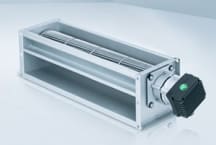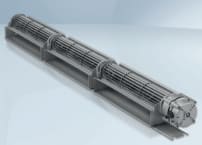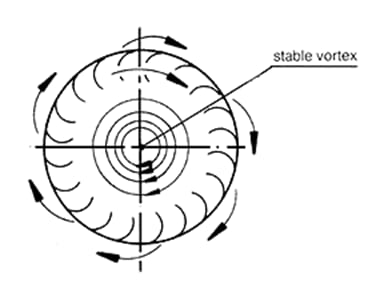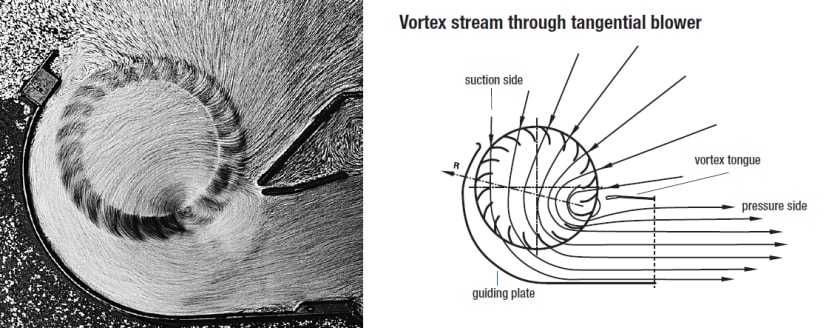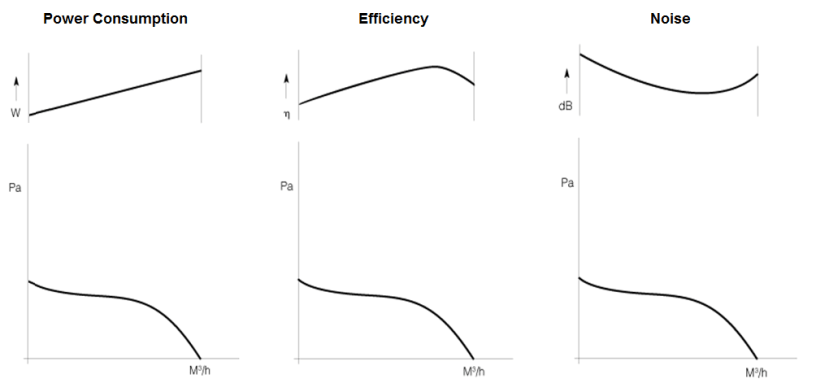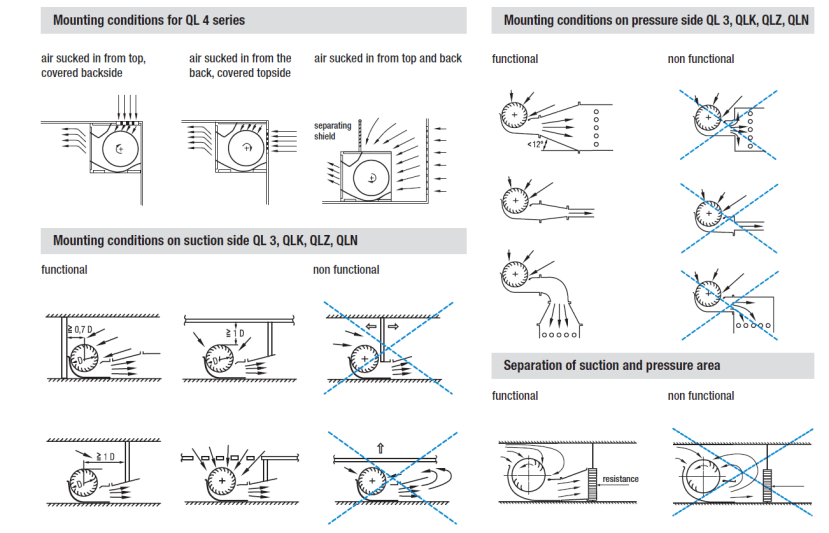Fan Types - Why Choose a Tangential fan
Follow articleHow do you feel about this article? Help us to provide better content for you.
Thank you! Your feedback has been received.
There was a problem submitting your feedback, please try again later.
What do you think of this article?
Crossflow Blower
When we have defined the volume flow rate that we require, whether this is to provide fresh air or process cooling, we need to combine this with the resistance to flow that the fan will encounter in the application. The volume flow rate, (in m3/hr) and the pressure (in Pascals - Pa), are combined to become the duty point against which the fan must operate. It is important that we select a fan whose performance characteristic meets the required duty point on or near the point of peak efficiency. Using the fan at its peak efficiency minimises the power consumption and noise emitted from the fan whilst delivering the required performance.
How does a Tangential Fan work?
The name, ‘Crossflow Blower’ provides a hint to how the air enters and exits the fan. A tangential fan consists of a long cylindrical impeller of a similar construction to forward curved impeller.
The ends of the cylindrical impeller are solid end plates that support the ladder strip construction of the impeller blades. Dependent on the width of the impeller there may be further support disks to ensure impeller rigidity and dimensional integrity. These solid end plates prevent air movement across the width of the impeller which means the air must travel through the impeller.
On its own, when a tangential impeller is rotated an equilibrium is created. Throughout the whole cross section of the impeller, air is being stirred in concentric circles with a stable vortex in the centre of the impeller. Whilst this is creating air movement there is no useful work being done because the air is not going anywhere - see below….
To produce work air must travel through the impeller, which in the case of a tangential fan means that it must enter from one side and exit out through the other. To achieve this, the position of the vortex must change to create an imbalance in pressures. Shifting the position of the vortex is accomplished by adding a housing around the impeller and placing an obstruction near the outer diameter of the impeller.
The obstruction is known as a vortex tongue and its shape and position will determine the performance characteristic of the fan as well as the change in direction of the air flow. This shifting of the vortex creates high velocity in the centre of the impeller increasing the dynamic pressure, reducing static pressure. Thios creates suction on the inlet of the fan. As the air exits through the other side of the blower cross section the velocity slows, decreasing the dynamic pressure and increasing static pressure. This causes the air to blow out of the exhaust side.
Fan Characteristic
Whilst the power consumption of a tangential fan is lowest when operating at low flow and maximum pressure development, the most efficient operating point is at the knee of the curve. As with the other types of impeller, operating at the most efficient operating point not only delivers the highest output but it is also when the fan is operating at its quietest.
Typically a small diameter tangential blower will develop a pressure of between 12 to 50Pa with flow rates in the range for 100 to 400 m3/hr. In comparison with axial and centrifugal fan designs this performance is relatively low. In addition to this, the overall efficiency of tangential fans is relatively low as well.
So, with a relatively low output performance and low efficiency, why use a tangential fan?
Tangential fans deliver an airflow which provides a wide curtain of air with a consistent velocity across the entire width of the exhaust. Commonly the design choices include a single fan option or a dual outlet with a central motor as shown below…
Tangential fan exhaust widths can be as small as 60mm wide up to 360mm. When used in a double width configuration the range can be extended up to 720mm. In theory any width is possible however in reality due to structural reasons there is a limit to the maximum width a tangential fan can be manufactured to.
Originally this type of fan was used in 19” racks for electronics cooling for older generation computers. With the advent of smaller components and more densely populated equipment, tangential fans have been replaced by high speed, high performance compact fans due to greater pressure development requirements.
These days tangential fans can be used for a number of applications including: air curtains, blowers for electrical resistance heaters (Electric Fires / Kick space heaters), skin cooling for ovens amongst others.
Mounting options
As mentioned previously, the tangential blower uses a high velocity stable vortex to create a pressure difference between the suction and exhaust. To facilitate this, we build a scroll around the impeller the shape of the of which along with the position of the vortex tongue will determine the air path through the impeller. It is most important that the airflow on suction and exhaust sides do not disrupt the function of the vortex in creating the flow through the fan. For this reason, there are several installation recommendations.
Mounting considerations - Clearances
It is important to ensure sufficient clearance on the suction and side of the fan…
Insufficient clearance and obstructions on the suction side of the fan will increase the inlet velocity which will lead to turbulence. This turbulence will be increased as the air passes through the impeller which makes the transfer of energy from the fan blade to the airless efficient, cause the creation of more noise and reduce the fan efficiency. Minimising any disturbances as the air enters the fan will also ensure that the stable vortex does not fluctuate which maintains the efficiency and performance of the fan.
On the exhaust side, it is recommended to use a transition piece to avoid turbulence and regenerated noise induced by sharp changes in direction or cross-sectional areas.
Summary – Why Choose a Tangential Blower?
When the requirement is for the delivery of air consistently across a wide outlet area a tangential blower should be considered. Wider airflow delivery can be achieved by changing from a single to a double fan design.
The fan should be selected within its optimum range which is at what is known as the knee of its characteristic curve which is also where the fan has the quietest operation. Air on the inlet side of the impeller should be kept as smooth and laminar as possible; to maximise the efficiency at least a clearance of an impeller diameter should be allowed on the fan inlet. Transition pieces should be used on the exhaust to minimise turbulence and regenerated noise.
The wide airflow pattern means that the tangential blower provides is a useful option to consider when considering lower pressure volume flows.


